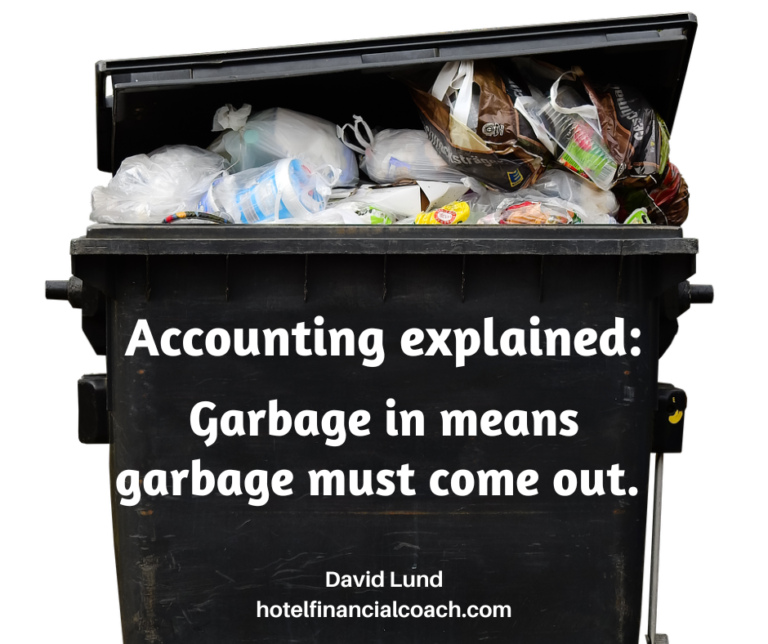
By David Lund
No one can explain accounting.
I have some pretty crazy situations presented to me by potential clients. I say crazy and I what that means is that it is almost unbelievable that anyone would find themselves in such a mess with their business and their books. I also say potential client. Almost always it is never going to be a client, but because I am out there – and in order to find real customers – I must kiss a lot of frogs.
I am not complaining. To the contrary I am only too happy to speak with just about anyone who has a problem and thinks I can help. I provide a service and in order to get a paying client I need to look at all kinds of different situations. I have learned to never pre-judge any situation or person. Some of my best and most interesting clients have the appearance at the start of our engagement to be kinda out there, if you know what I mean.
In this piece I am going to riff on a couple of situations that were presented to me and give you some insights as to just how bad it can be. Full stop here: I am not trying to make fun or light of anyone’s troubles. And I am not calling anyone out. I just want you to see that maybe it is not so bad where you are and, as the saying goes, it can always be worse.
It always starts with an email. No surprise here because I invite and encourage people to reach out if I can help with a complimentary discussion. This one ended up in my inbox with a passionate and somewhat lengthy story about a young duty manager who was asked by the hotel owner to sub in for the accountant who was away from the property for an unplanned period of time. Never a good invitation to receive. The poor kid had zero training or experience with accounting and the owner wanted to know if the F&B department was profitable. What was he to do? So, he called me.
The thing is, he had no way of looking at the question because their accounting system was not set up to capture the information they now wanted. That is many times the case, because in order to answer the question you must anticipate the question first. That is why the “uniformed system of accounts for the lodging industry” USALI is set up the way it is. To answer those anticipated questions.
So, I explained the steps necessary to the young lad and he took it all in and said with several deep gasps, “I guess we will never know.” But really, “The truth is out there,” I said.
The truth is this: If we set up our system to track the revenues and expenses associated with the food and beverage operation, we would know the answer and most importantly what to do with the answer. Are we making any profit or are we losing our shirts and what can we do about it?
That is explaining accounting. It is a system we can use to monitor the results, but it will not work properly if we do not set it up correctly.
This is the part where most people close an eye or take a deep breath because there is a disconnection.
Imagine if you will that your car will not move because the transmission is placed in front of the engine and not behind it. The same situation exists with the order and placement of the numbers. It must be in the correct order and placement, but people have a harder time understanding this challenge than they do with the engine and transmission scenario. Somehow, it is just not an easy thing to see for some.
The second situation was even more astounding. My client in this case told me his accounting “service” balanced his books.
To which I replied, “That’s great – what do the books tell you?”
He stopped speaking at this point and simply asked, “What do you mean?”
This is what I mean: “Let’s look at the balance sheet, tell me the number beside the guest ledger account.”
“$45,000,” he said.
“Ok, let’s look further,” I continued, “Your hotel has 50 rooms so that means that each room owes you $900?”
He was silent. I added that at an average rate of $150 the average guest must stay six days. And, actually, his hotel is an airport hotel where the average is a one-night stay. So, Houston, I think we have a problem.
Inside his accounting system we have a problem. But he cannot see it. Not until we slow things down and I deconstruct the situation at hand.
“That account should be what your current in-house customers owe you.”
“How can that be?” he asked. Well, let’s look at it.
“Find the end of day report from your property management system for the 31st of December,” I said, “that lines up with the balance sheet date.”
This only took a moment, and we could now see the report. First thing that jumped out was the report was seven pages long. Almost all of the accounts were from two-four years ago. They almost all had a balance of less than $10.
“Let’s look at Mr. Car’s account.”
In a moment he opened up the folio and we saw the transactions, room revenue $140, tax $14, and a payment line of $148, leaving us a balance of $6.
“What happened?” he asked.
“Well, the client came and stayed, he booked through a third party like Expedia and there was a mismatch between the revenue/rate you posted and the funds they sent.” This is a very common situation and now they had literally hundreds of similar accounts.
“So,” he asked, “what do we do?”
“You need to write these off,” I told him, “At this point you’re not going to be able to collect the variance from the client, so you need to get those off your books.”
Here is the magic moment. He says,
“Well, that’s easy – we will just do an adjustment and zero out these accounts.”
“Not so fast!” I reply.
“By adjusting these accounts today you’re going to need to reflect that in your revenue this month.”
A further detailed review found $42,399 that needed to be reversed.
“What that means is way back when these hundreds of clients stayed with us,” he said, “the revenue recognized was too high and now it needs to be corrected. Which means we need to take a HIT!”
Nothing escapes the machine. Garbage in means garbage must come out.
That’s accounting explained.


